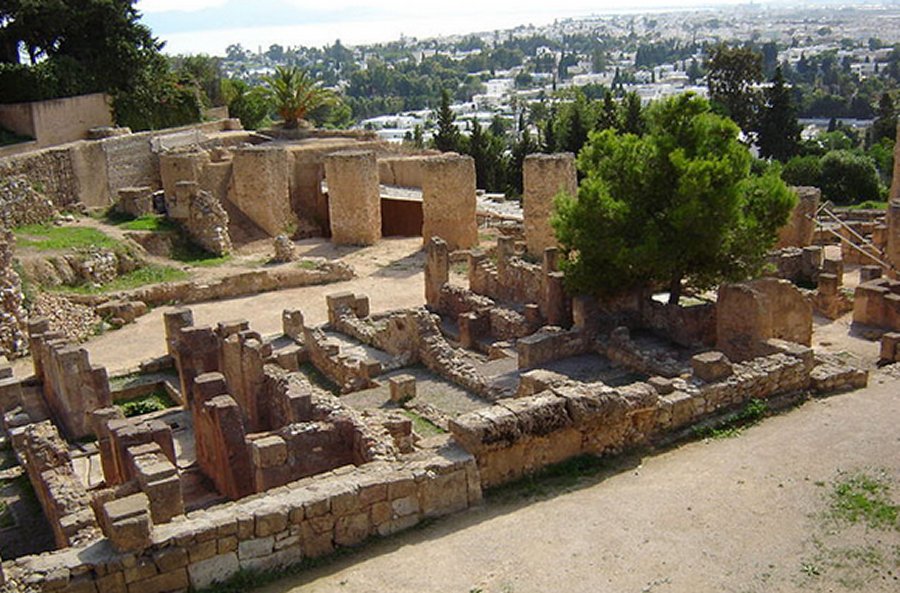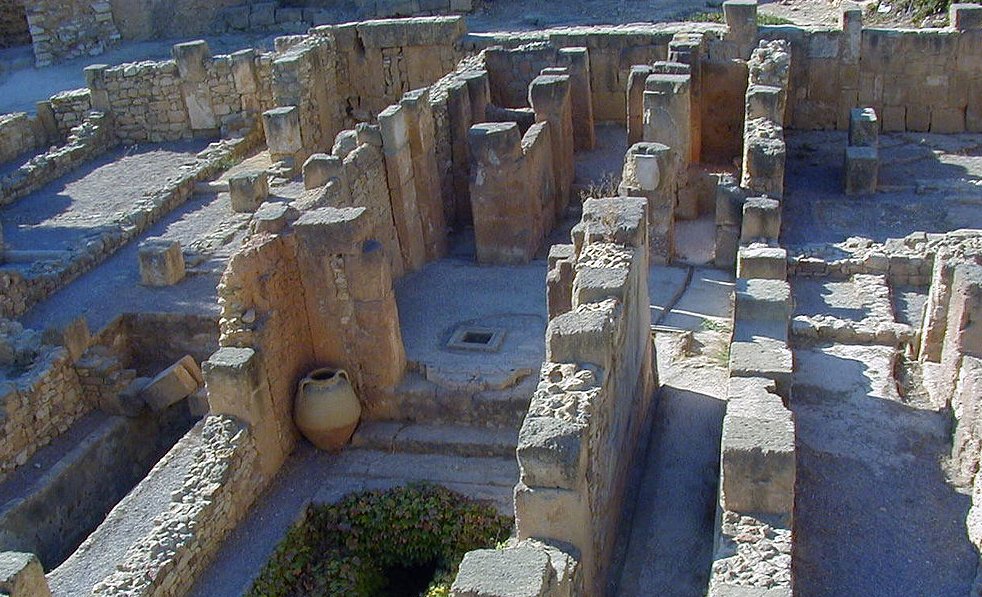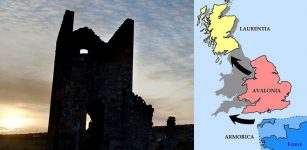Carthage: Prosperous Phoenician Colony That Became Dominant Power In The Western Mediterranean
MessageToEagle.com – Ruins of Carthage (its Phoenician name means ‘Kart-hadasht ‘ ( “new town”) are located approximately 18 km northeast of Tunis on the coast of North Africa and surrounded by modern residences and beautiful gardens.
An ancient legend is strongly associated with this place; it tells the story of the great city of Carthage, which was founded here nearly 3000 years ago.

This beautiful legend attributes the founding of Carthage to Elissa (Dido), a Phoenician princess from Tyre, sister of the King of Tyre – Pygmalion. Astonishingly enough, much of this story turns out to be historically accurate.
When Pygmalion killed Dido’s husband, she and her children fled to North Africa.
Dido asked the Berber king Iarbas for a small bit of land for a temporary refuge until she could continue her journey. Iarbas agreed to give her only as much land as could be encompassed by an oxhide. A clever woman had cut the skin into thin strips, so that she had enough to encircle an entire nearby hill, which was afterwards named Byrsa (‘hide’).
On this piece of land on which she founded Carthage; many of the local Berbers joined the settlement and both Berbers and envoys from the nearby Phoenician city of Utica urged the building of a city.
According to historical records, Carthage was not the Phoenicians’ first colony but already in its early days, became the largest and most famous city. It was an important political and commercial center, but the date of the foundation of Carthage was questioned by researchers. Archaeological data indicate that nothing earlier than the last quarter of the 8th century BC has been discovered, a full century later than the traditional foundation date.

The location of Carthage was very convenient and safe; it offered access to the Mediterranean but was shielded from violent storms.The city was well protected and easily defensible. The ancient citadel, the Byrsa, was on a low hill overlooking the sea. Some of the earliest tombs have been found there; Byrsa area was once adorned with a large temple dedicated to Juno, Jupiter, and Minerva, and near it stood a temple to Asclepius. Also on the Byrsa site stood an open-air portico, from which the finest Roman sculptures at Carthage have survived.
Surrounding Carthage were walls “of great strength” said in places to rise above forty feet (13 m), being almost thirty feet (10 m) thick. To the west three parallel walls were built. The walls altogether ran for about thirty-three kilometers to encircle the city.

The heights of the Byrsa were additionally fortified; this area being the last to succumb to the Romans in 146 BC.
No remains of Carthage’s domestic and public buildings were unearthed.
See also:
Emperor Gordian II Loses The Battle Of Carthage – On Apr 12, 238 AD
Battle Of Cape Ecnomus: One Of The Greatest Naval Battles In History
Pax Romana: 200-Year-Long Period Of Stability Within The Roman Empire
The peak power, the city experienced in the third century BC. In the same age, however, Carthage was engaged in a series of wars with Rome, which ended with the destruction of the city in 146 BC during the third Punic War.
The first Punic War (264 – 241 BC) was a complete disaster for Carthage, causing it to lose the island of Sicily.

In the second Punic War (218 – 202 BC) Hannibal famously led his army and elephants over the Alps to attack the Romans on their own soil. For many years, he led his victorious army up and down what is known today as Italy. On every battlefield Hannibal defeated the Roman legions. Finally, he was lured for alleged peace negotiations to North Africa and the Romans were able to defeat him.
The third and final Punic War (149 – 146 BC) led to Rome’s complete destruction of Carthage. That devastating defeat ended Carthage’s brilliant time of glory. The city returned once more to peaceful cultivation of its colonies and sea trade.
After decades of Carthage was reborn as a Roman colony, more exactly, Roman province of “Africa” (with its capital in Carthage) has become the granary of Rome and experienced another period of flowering until the fall of the Empire.
Throughout history, the city passed from hand to hand. After the Romans, the Byzantines came. In the year 439, Carthage was plundered by the Vandals, who ten years earlier appeared in North Africa, and made it to his capital. In the 534, the city was recaptured by the Byzantine army of Belisarius. In the seventh century, the Arabs appeared in the regions and in the sixteenth century, Carthage was in the hands of the Ottoman Empire.
Copyright © MessageToEagle.com All rights reserved. This material may not be published, broadcast, rewritten or redistributed in whole or part without the express written permission of MessageToEagle.com











